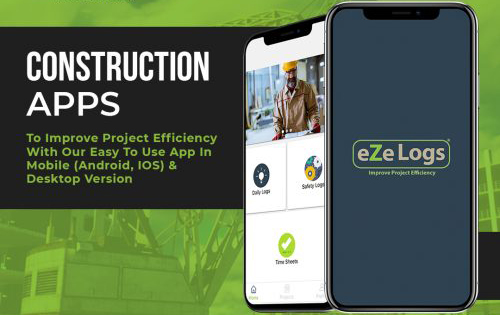Imagine entering a building that exudes modernity, elegance, and efficiency in every detail. The lighting is perfectly adjusted, the temperature just right, and everything from air conditioning to elevators works seamlessly – but this building isn’t just your imagination but made possible through Building Information Modeling.
Building Information Modeling is an innovative technology revolutionizing how buildings are designed, constructed, and managed. It enables architects, engineers, and construction professionals to create digital models of structures that can be used for everything from design visualization to project management and facility management.

This has recently played an increasingly significant role in facility management. Through BIM, facility managers gain real-time access to data about building systems and components, streamline maintenance operations, and minimize downtime – leading to greater operational efficiency and significant cost savings for building owners and operators.
We will investigate the role of BIM in facility management and discuss its advantages, drawbacks, and recommended practices. We’ll also look at real-world examples of how It has been utilized to enhance facility operations while considering future trends and prospects for this groundbreaking technology.
Key Takeaways
- Building Information Modeling is a technology that revolutionizes how buildings are designed, constructed, and managed.
- BIM enables architects, engineers, and construction professionals to create digital models of structures that can be used for everything from design visualization to project management and facility management.
- BIM has significant benefits in facility management, including improved asset management, space utilization, streamlined building operations, reduced energy consumption, and communication among facility teams.
- Challenges to implementing BIM for facility management include the initial investment required, accurate and up-to-date data needed to create an efficient digital model, and resistance from facility teams who may prefer traditional methods and workflows.
- Future trends in BIM and facility management include increased use of BIM in sustainability initiatives, expansion of BIM to include smart building technology, and greater focus on interoperability and data sharing.
Use the software to manage the BIM process
Benefits of BIM in Facility Management
Facility management is a delicate field that requires constant attention to detail and an unwavering dedication to efficiency. Fortunately, the advantages of BIM in facility management can help alleviate many daily struggles facility managers face.
It gives facility managers a complete picture of their building’s systems, components, and infrastructure in one digital model. This digital representation can be utilized for asset management, improved space utilization, streamlined building operations, reduced energy consumption, and communication among facility teams.
Imagine monitoring the condition and performance of every component in your building in real time, with the power to plan maintenance proactively rather than reactively. Or can you optimize space utilization within your building, reduce occupancy costs, and enhance the user experience? These possibilities become a reality with BIM.
BIM also facilitates enhanced collaboration among facility teams, contractors, and vendors. With a shared digital model of the building, stakeholders can easily communicate and work together on problems while making decisions quickly and efficiently.
Use Cases of BIM in Facility Management
BIM is an adaptable technology that can be utilized for many facility management tasks. Here are some real-world examples of how BIM has been used to enhance facility management practices.
Example 1: Consider a large commercial building with an intricate mechanical, electrical, and plumbing (MEP) systems network. Asset tracking and maintenance for these components were laborious and manual.
But thanks to BIM integration and facility management software, facility managers can now monitor each asset’s condition within the digital model of the building – enabling proactive maintenance scheduling that reduces downtime and costs associated with reactive repairs.
Example 2: Space utilization is another critical aspect of facility management. By using BIM for space management and occupancy tracking, facility managers can optimize the use of space within their buildings.
For instance, using BIM creates a digital floor plan that displays each room’s location and capacity within a structure; this data helps track occupancy rates, identify underutilized areas, and make informed decisions regarding space allocation and planning.
Example 3: Finally, It enabled facility management processes can enhance operational effectiveness and lower costs. For instance, it creates a digital model of a building’s heating, ventilation, and air conditioning (HVAC) systems so real-time monitoring and predictive maintenance can occur.
This reduces energy consumption and extends the lifespan of mechanical systems within a building – leading to significant long-term cost savings over time.
Challenges in Implementing BIM for Facility Management
Though the advantages of BIM in facility management are undeniable, some challenges must be considered when implementing this technology.
One of the primary obstacles to it’s implementation is the initial investment required. This encompasses not only software and hardware costs but also training and education for facility teams on effectively utilizing this technology. Furthermore, changes may need to be made to existing facility management processes and workflows, which could prove disruptive and time-consuming.


Another challenge is the need for accurate and up-to-date data to create an efficient digital model. Coordination and collaboration among stakeholders such as architects, engineers, contractors, and facility managers are necessary to accomplish this task. In some cases, additional communication channels or data-sharing protocols may need to be implemented.
Building information modeling implementation necessitates a fundamental shift from traditional facility management practices. This includes emphasizing data-driven decision-making and the capacity to analyze and interpret complex datasets. Facility teams must be willing to adopt this new way of working to fully reap BIM’s rewards.
Finally, change can often face resistance from within the organization. Facility teams may be reluctant to adopt new technology or prefer traditional methods and workflows.
To overcome this resistance, effective change management strategies and communication are necessary for stakeholders to comprehend its advantages and how it can enhance facility management processes.
Future Trends in BIM and Facility Management
Facility management is rapidly advancing, and Building information modeling will play a greater role. Here are some of the anticipated trends in BIM and facility management:
Increased use of BIM in Sustainability Initiatives: With sustainability becoming an increasing concern for facility managers, BIM is expected to play an increasingly important role in identifying and implementing energy-saving measures. It can be utilized to simulate different scenarios for energy consumption, providing facility managers with valuable insight into building design and operations.
Expansion of BIM to Include Smart Building Technology: As the Internet of Things (IoT) continues to develop, Building information modeling is expected to become even more integrated with smart building technology. This includes using sensors and other IoT devices for real-time data collection about building performance, which can then be fed back into the BIM model to assist facility managers in making data-driven decisions.
Greater Focus on Interoperability and Data Sharing: For BIM to be truly effective in facility management, it is essential that different software programs and platforms can communicate with one another. In the future, we expect to see an even greater emphasis on interoperability and data sharing, enabling facility teams to access and analyze data from numerous sources.
Integration of BIM with Augmented Reality and Virtual Reality: As technology advances, we can expect more creative ways of using BIM in facility management. This includes the utilization of augmented reality and virtual reality to improve user experience as well as provide greater insights into building performance.
Preventive Maintenance: Facility managers strive to reduce downtime and extend building asset lifespans, so this will become increasingly important in preventive maintenance planning. By tracking component condition and performance with BIM software, facility managers can plan maintenance proactively, avoiding unexpected breakdowns or costly repairs.
The Bottom Line
BIM has proven to be a valuable tool for facility management, offering numerous advantages such as improved operational efficiency, cost savings, and better decision-making. While challenges are associated with implementing BIM, such as the initial investment and need for accurate data, the potential rewards far outweigh these obstacles.
Looking towards the future, we can expect even greater integration of this with other technologies like smart building technology, augmented reality, and virtual reality. This will enable facility managers to make more informed decisions about building performance and maintenance – ultimately leading to improved outcomes for building occupants and stakeholders.
Facility management is ever-evolving, so teams must remain open to new technologies and approaches. Building information modeling is just one example of how technology can improve building performance and enhance user experience. By adopting these cutting-edge methods and strategies, facility managers will position themselves for success in an ever-evolving landscape.


